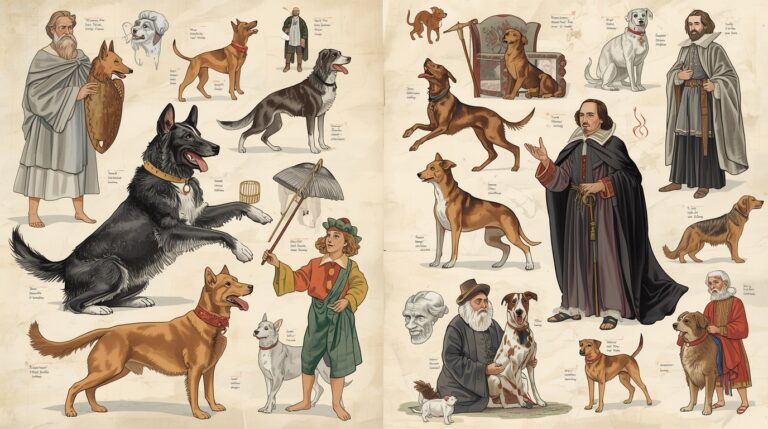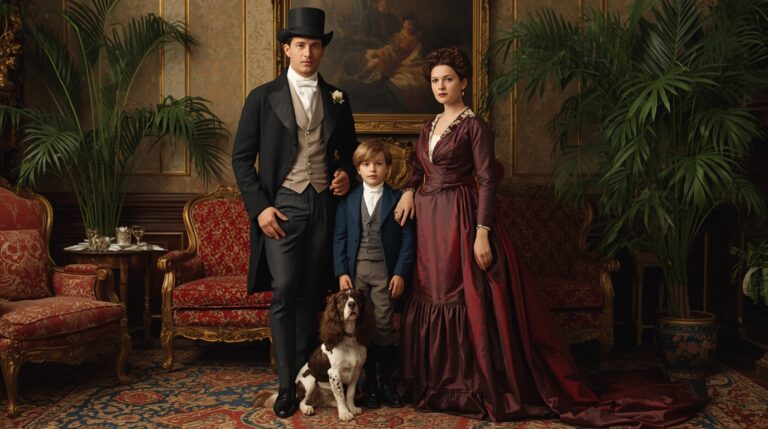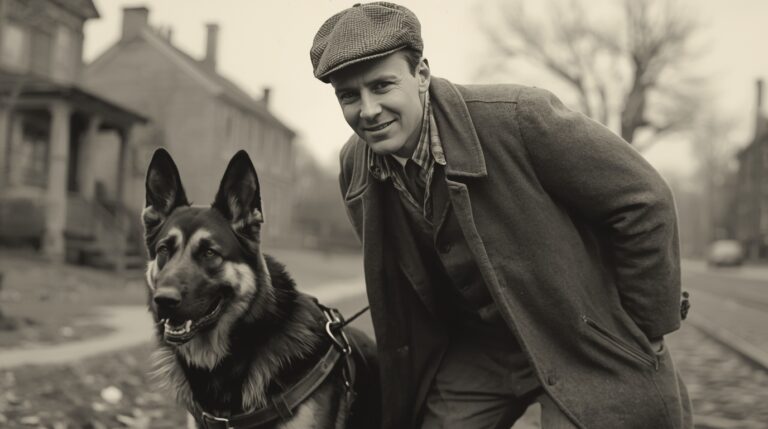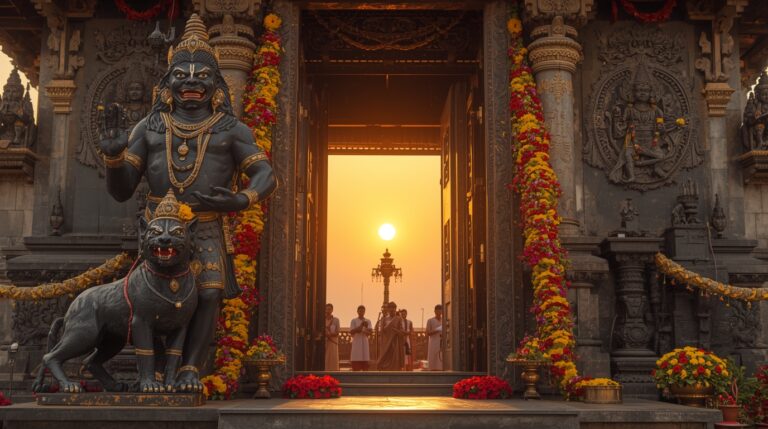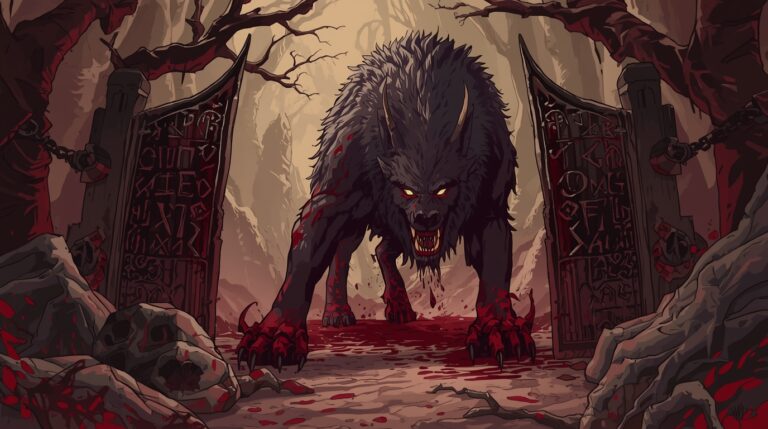Dogs in Ancient and Medieval Warfare
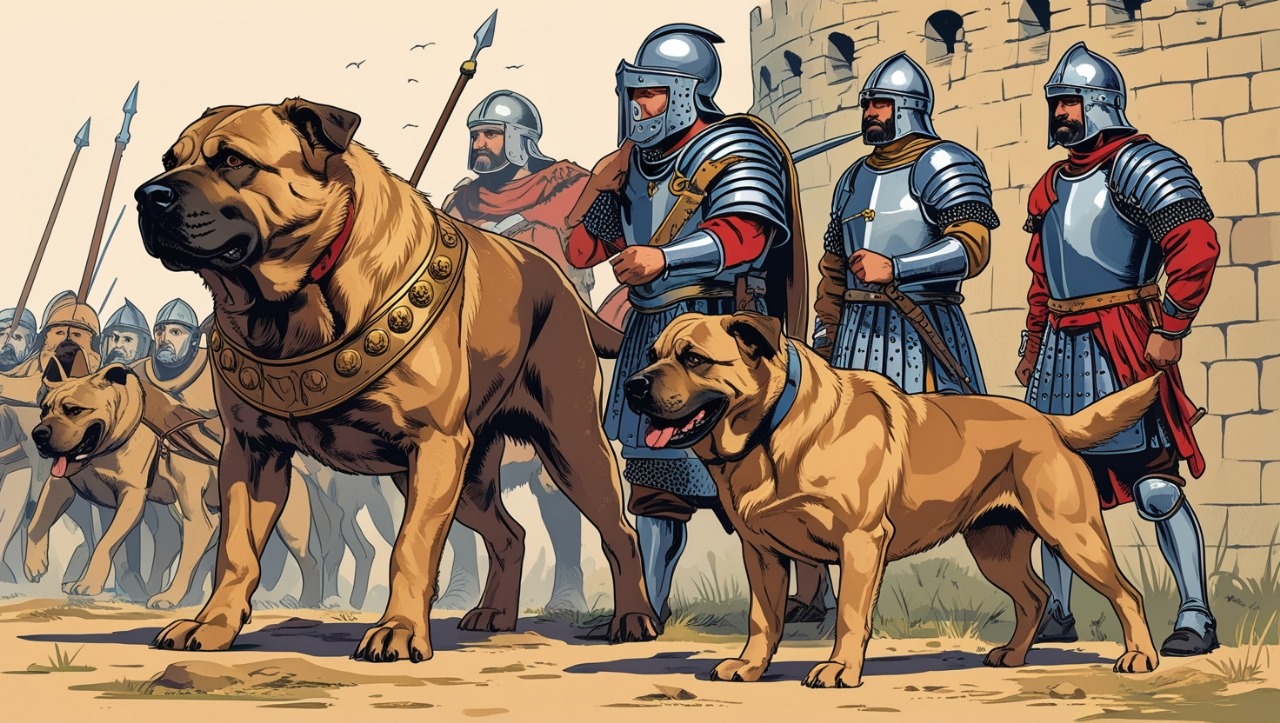
The First Dogs of War
The earliest references to war dogs date back over 7,000 years. Archaeological sites in Mesopotamia and Anatolia show images of dogs with soldiers. These canines were used for:
- Hunting and guarding livestock
- Alerting to night attacks
- Early forms of attack roles in tribal warfare
Dogs were seen as symbols of protection, often painted on shields or carved into stone reliefs.
Assyrian War Dogs
The Assyrians (911–605 BCE) used large molosser-type dogs, bred for battle and defense. Their importance was so prominent that they were depicted on bas-reliefs in Nineveh, showing dogs attacking lions and enemies alike.
Roles included:
- Tracking enemies in thick brush
- Protecting supply lines and nobles
- Intimidating opposing forces with snarls and size
Dogs in Ancient Egyptian Warfare
Egyptians used dogs for guarding camps, escorting royalty, and hunting. While not often seen in frontline battle, they were:
- Integral to patrol duties
- Buried alongside soldiers and pharaohs
- Associated with the god Anubis, symbolizing protection in the afterlife
Molossian Dogs of Greece and Epirus
The Molossus is considered one of the most influential war dog breeds in history. Originating in Epirus (Northern Greece), these dogs were:
- Used by Alexander the Great, who took them on his eastern campaigns
- Bred for power, courage, and loyalty
- Ancestors to modern Mastiffs and Rottweilers
Molossians would charge enemy lines in packs or defend flanks.
Roman Empire and the Legion Canines
Roman legions incorporated dogs into their military system. The Canis Pugnax, a large mastiff-type dog, served as:
- Attack dogs in sieges and skirmishes
- Camp guardians during long campaigns
- Companions to generals and centurions
Dogs were trained to lunge at horses, disrupt formations, and create chaos.
Celtic and Gallic Dogs in Warfare
Tribes like the Celts and Gauls used large hounds such as the Irish Wolfhound, capable of bringing down a man on horseback.
- These dogs were both warriors and symbols
- Often sacrificed in rituals before battle
- Used to chase down fleeing enemies and retrieve wounded
Dogs Used by Germanic Tribes and Goths
Tribal warriors used dogs for ambush tactics, guarding supply caches, and deterring night raids. Excavations reveal dogs buried with chieftains, suggesting deep spiritual and military ties.
Attila the Hun and the Use of War Beasts
Attila’s army included war dogs used in:
- Cavalry raids to corral and flank enemies
- Intimidation strategy, as Huns relied heavily on shock and speed
- Camp and livestock protection
These dogs were hardy, mobile, and often shared tents with warriors.
Dogs in Byzantine Military Strategy
The Byzantine army, successors to the Romans, used dogs in:
- Fortress defense
- Night patrols, acting as organic alarms
- Messenger routes during sieges
Their roles remained crucial as empires transitioned through warfare eras.
Islamic Caliphates and Guard Dogs
While Islamic texts have varying views on dogs, many Caliphs and generals employed them for:
- Guarding palaces
- Securing caravans and military camps
- Working as night sentries
Guard dogs were seen as tools of order and vigilance.
China’s Ancient Canine Defenders
In ancient China, dogs were:
- Trained to guard temples and military compounds
- Occasionally bred for combat, especially in border conflicts
- Revered for their discipline and loyalty
Breeds like the Tibetan Mastiff trace their roots to war service.
Dogs in Medieval Europe
As warfare evolved, so did the use of dogs. Medieval feudal systems introduced new roles:
- Mastiffs and Alaunts for castle defense
- Guarding noble estates and prisoners
- Dogs trained to accompany knights into battle
These breeds grew larger, more muscular, and more aggressive.
also read this Dogs in Warfare and Service
Siege Dogs and Fortress Defense
Dogs were stationed at:
- Moats and outer gates
- Underground tunnels, where they could detect enemy sappers
- Key choke points, sounding the alarm before attackers reached the walls
Knights and Hunting Dogs in War
Knights often trained their hunting hounds to serve dual roles:
- Chasing game in peacetime
- Attacking enemies or defending in wartime
Breeds like Bloodhounds and Boarhounds were deployed against infantry.
The Role of Dogs in Crusader Armies
Dogs accompanied Crusaders into the Holy Land, serving as:
- Guards, messengers, and symbols of loyalty
- Protection from raiders
- Spiritual guardians, especially among the Knights Templar
They appeared in religious manuscripts and battlefield logs.
Dog Armor and Battlefield Gear
Historic texts and museums reveal:
- Metal and leather armor fitted for dogs
- Spiked collars and plate mail for mastiffs
- Messenger dogs with leather scroll pouches
These enhancements improved survival and message delivery.
War Dogs as Camp Guardians
Beyond the frontlines, dogs were:
- Essential in guarding horses and provisions
- Acting as trip-wire alarms
- Protecting wounded soldiers from looters
Their senses helped detect stealthy intrusions during night camps.
Messenger Dogs in Medieval Times
Before radios, dogs:
- Carried written orders in sealed pouches
- Ran pre-trained routes between fortresses
- Were chosen for endurance and loyalty
Failure often meant death — but many succeeded where humans failed.
Cultural Significance of War Dogs
Throughout medieval society, dogs symbolized:
- Bravery, loyalty, and vigilance
- Featured in coats of arms and family crests
- Honored in tomb carvings, knightly armor, and religious iconography
Breeds Evolved for Combat
Several breeds directly descend from war dogs:
- Molossus → Mastiff, Rottweiler, Great Dane
- Alaunt → Bulldog, Bullmastiff
- Celtic hounds → Irish Wolfhound, Scottish Deerhound
Traits such as courage, bite force, and tenacity were preserved over generations.
Training Techniques in the Past
Trainers used:
- Harsh conditioning, often via starvation or pain
- Sound familiarization (e.g., drums, horns, screaming)
- Aggression induction with fighting drills
While effective, such techniques were often brutal and inhumane.
Limitations and Losses in Warfare
Despite their use, dogs faced challenges:
- Vulnerable to arrows and spears
- Needed daily feeding, water, and shelter
- Risked running wild or attacking friendly troops
Many perished in battle or were left behind during retreats.
Transition to Guard Dogs Post-Medieval Era
As gunpowder and artillery changed warfare, the era of combat dogs declined. However:
- Dogs became fixtures in estates, castles, and guard towers
- Breeding shifted from offense to protection and companionship
Conclusion: The Forgotten Warriors of Human History
From ancient Assyrian battlefields to medieval castles, dogs have served as warriors, guardians, and unsung heroes of countless conflicts. Their influence shaped both human strategy and dog evolution. Though their roles have changed, their legacy endures — etched in stone, bred into bloodlines, and remembered in loyalty.
